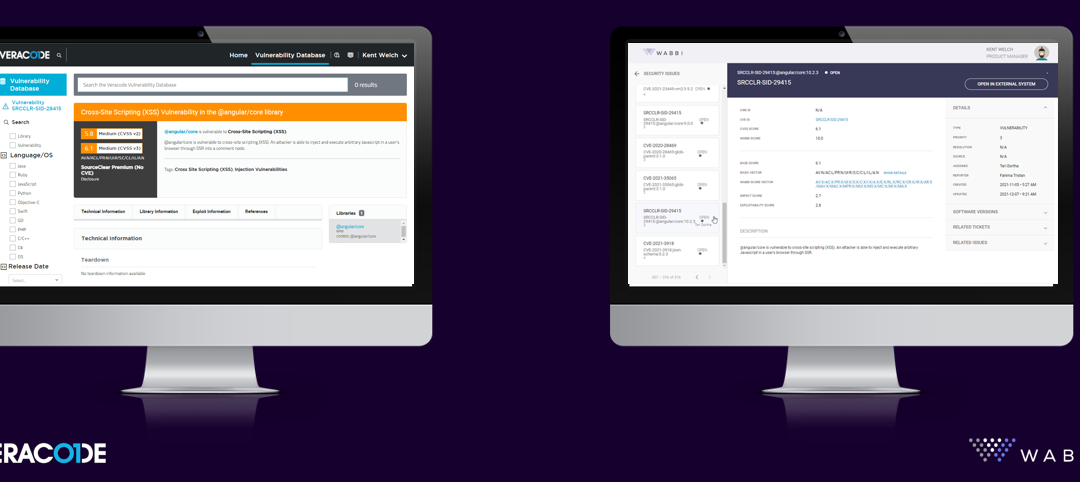Team Wabbi
June 12, 2024
Managing Your Application Security Lifecyle in the SDLC
The journey to DevOps and CI/CD has been long and arduous for many companies. I know, I’ve been there. And others of you who have been through this understand, it takes a lot to pull all the moving parts together: managing the cultural mind-shift, bridging the skills gap, bringing in new tooling and automation, keeping compliance in your sights, measuring and monitoring your DevOps status, and more.
And for this same reason, the journey to DevSecOps is going to be very similar. But in today’s world, it is equally important for your organization to spend the time to get it right. All of your teams will need to be security-aware, and all phases of the software development life cycle is going to have to be engaged in your DevSecOps journey and involved in your continuous improvement.
I call this Total Security Management (TSM).

What is Total Security Management?
Total Security Management (TSM) refers to a comprehensive approach to ensuring security across all stages and aspects of the software development lifecycle. This concept extends beyond traditional security measures to integrate security practices and awareness into every phase of development, aligning closely with the principles of DevSecOps. TSM involves:
- Cultural Integration & Enablement: Encouraging a DevSecOps mindset among all team members and providing training, resources and feedback loops to close the skills gap in implementing security practices and procedures.
- Orchestration & Correlation: Implementing and managing a variety of security tools and automated processes, such as SAST (Static Application Security Testing), DAST (Dynamic Application Security Testing), RASP (Runtime Application Self-Protection), SIEM (Security Information and Event Management), WAF (Web Application Firewall), SOAR (Security Orchestration, Automation, and Response), and SCA (Software Composition Analysis).
- Continuous Security Integration: Embedding security practices into every stage of the development lifecycle, ensuring ongoing assessment, monitoring, and improvement of security measures to maintain a robust and adaptive security posture.
One important aspect of TSM is the management of your application security posture. The first step, of course, it to get the instrumentation and monitoring in place and navigate the acronym/initialism soup: SAST, DAST, RASP, SIEM, WAF, SOAR, SCA, and on and on. Then the real fun begins – what do you do with all that information? And perhaps even more importantly, how do you navigate and prioritize the deluge of work items generated by all of these tools?
This is where Application Security Posture Management (ASPM) platforms come in. Much as how SOAR tools provided a single pane of glass to cyber incident management, ASPM tools can provide an umbrella view of all of your application security concerns, allowing you to get a sense of your security posture, and manage all of it using a priority-based approach. It ties together all components of a comprehensive application security program with:
- Centralized Security Visibility
- Prioritization of Security Issues
- Automation and Orchestration
- Contextual Analysis and Insights:
- Real-Time Monitoring and Alerts
- Compliance and Reporting
- Integration with DevOps and CI/CD Pipelines
- Continuous Improvement
ASPM is a strategic approach within TSM that leverages advanced tools and technologies to manage application security comprehensively, ensuring that security concerns are effectively addressed, prioritized, and integrated into the overall development process.
The transition to DevSecOps, much like the journey to DevOps and CI/CD, requires a holistic and persistent effort from organizations. Total Security Management (TSM) provides the framework needed to embed security deeply into every phase of the software development lifecycle. By fostering a security-aware culture, bridging skill gaps, and leveraging advanced security tools and automation, TSM ensures that security practices are not only implemented but continuously improved.

TSM is enabled by Application Security Posture Management (ASPM), which offers centralized visibility, prioritization of issues, and seamless integration with existing DevOps pipelines. ASPM tools enable organizations to manage and enhance their application security posture effectively, ensuring robust and adaptive security measures. Through TSM and ASPM, organizations can achieve a comprehensive and proactive security strategy, essential for navigating the complex landscape of modern software development.
Related Articles

Stopping the Log4j Bleed: Why Mature Security Processes Include a SBOM
Gone are the days when organizations could implement basic cybersecurity measures and assume they wouldn’t be necessary. In fact, cybercrime damages are now predicted to reach $10.5 trillion annually by 2025 - an indication of just how far reaching and severe...

Why Log4j is a Lesson in Prioritization
The recent Log4j vulnerability, which Cybersecurity and Infrastructure Security Agency (CISA) Director Jen Easterly called “the most serious vulnerability I have seen in my decades-long career,” forced many Security and Development teams to work through the holidays...

Stop Treating Security like Leather Seats
When was the last time you had to buy a new car? Some enjoy the haggling while others hate it, but if you want to maximize your ability to negotiate on price you’ll need to review the car’s models and options. For any given car, automakers generally present you with...

Wabbi Teams with Veracode to Enable Enterprises to Reduce Software Risk While Improving Developer Productivity
BOSTON (PRWEB) DECEMBER 07, 2021 Wabbi, a Continuous Security platform, today announced its partnership with Veracode, the largest global provider of application security testing (AST), offering a holistic, scalable way for organizations to manage security risks...
No Results Found
The page you requested could not be found. Try refining your search, or use the navigation above to locate the post.